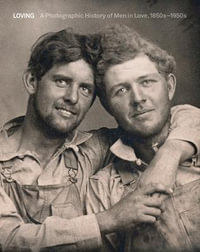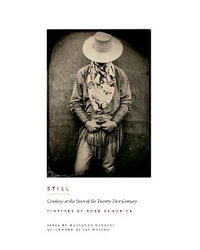
At a Glance
Hardcover
$92.75
or
Aims to ship in 15 to 25 business days
When will this arrive by?
Enter delivery postcode to estimate
From 1839 when it was invented, photography has served to create portraits of individuals, and soon thereafter portraits of families, later placed in photo albums. Photography, collected and archived, entered the intimate sphere, enabling people to arrange the fragmented images of their lives as they saw fit. Following its forerunners (miniature portraits, silhouettes, physionotraces), the photographic portrait also served the new expectations of the emerging urban bourgeoisie and its need for social representation. Studios opened up in cities everywhere to meet the fast growing demand. In addition, the new medium distinguished itself with its esthetic superiority.
"Even as it emerged, although the technique was still very primitive, photography enjoyed an exceptional quality of artistic finish" (Gis le Freund). What can photography show us to day of the visible and invisible aspects of family sociology? "How do the roles we expect them to play betray the emotional realities and complexities of lived life?" wonders Daniel Mendelsohn, in his introduction entitled "Unknown Faces/Redeeming Structures".
By creating this corpus of fixed black and white images, each composed in a large 5' x 7' frame, the photographer has produced a work of anthropological scope, reaching beyond representation by placing the subject at palpable distance, thereby objectifying it. What should we think of these seemingly impassive faces and their hypnotic gazes, what should we think of these postures, seated or standing? What goes on within these families and outside the frame? The use of a rigid protocol similar in all sessions makes every family portraits intriguing, and encourages our reflection.
Inspired by the work of Bernd and Hilla Becher, whose esthetics of objectivity tended towards minimalism, Isabelle Boccon-Gibod, a self-made artist, with an interest for technique, has played with a frontality quite similar to that of the Bechers, resting on the idea that our bodies, when joined together, form a sort of architecture. The idea, also, that a face, deprived of its smile, offers a neutrality of expression worth considering: masks fall and reveal a nakedness (naked truth?) to be admired and deciphered beyond the appearances of social games. She was guided, yet not limited, by this principle: the image of a family seen as a fa ade-like structure, in which faces are the windows.
About the Author
Isabelle Boccon-Gibod began making use of photography when she lived in England, and has largely devoted herself to it since her return to Paris in 2004. She has taught History of Photography at the Paris College of Arts. A graduate of the Ecole Centrale School of Engineering and a former student at Columbia University, after a brilliant career in the paper industry, she now serves as non-executive director on the boards of six French industrial companies.
In addition, she has made a career as an author in France : she has published Fors interieurs, rendez-vous avec des mathematiciens (Leo Scheer, 2011), which received a special mention from the d'Alembert Prize (2012) and Entre leurs mains, enquete sur l'exercice du pouvoir (Plein jour, 2014). Structure is her second book of photographs, after Sous les ponts, Paris, published in 2014 by Editions Verlhac. She has shown her photographs and videos in Paris, Brussels and Haifa. The American writer and literary critic Daniel Mendelsohn has won numerous awards including the National Book Critics Circle in 2006, the French 2007 prix Medicis for foreign literature and the French Book of the Year prize (given by Lire magazine) for his book The Lost. His latest works are An Odyssey: a Father, a Son and an Epic (2017) and Three Rings (2020).
He is professor of classical literature at Bard College, and a contributor to the New York Review of Books. For his introduction to Structure , he wove together links between Isabelle Boccon-Gibod's work and his own family history. It comes as no surprise that a writer such as Daniel Mendelsohn would be so moved by these portraits. It can clearly be stated here that literature is a photograph without images, and photography, a fiction without words.
"Even as it emerged, although the technique was still very primitive, photography enjoyed an exceptional quality of artistic finish" (Gis le Freund). What can photography show us to day of the visible and invisible aspects of family sociology? "How do the roles we expect them to play betray the emotional realities and complexities of lived life?" wonders Daniel Mendelsohn, in his introduction entitled "Unknown Faces/Redeeming Structures".
By creating this corpus of fixed black and white images, each composed in a large 5' x 7' frame, the photographer has produced a work of anthropological scope, reaching beyond representation by placing the subject at palpable distance, thereby objectifying it. What should we think of these seemingly impassive faces and their hypnotic gazes, what should we think of these postures, seated or standing? What goes on within these families and outside the frame? The use of a rigid protocol similar in all sessions makes every family portraits intriguing, and encourages our reflection.
Inspired by the work of Bernd and Hilla Becher, whose esthetics of objectivity tended towards minimalism, Isabelle Boccon-Gibod, a self-made artist, with an interest for technique, has played with a frontality quite similar to that of the Bechers, resting on the idea that our bodies, when joined together, form a sort of architecture. The idea, also, that a face, deprived of its smile, offers a neutrality of expression worth considering: masks fall and reveal a nakedness (naked truth?) to be admired and deciphered beyond the appearances of social games. She was guided, yet not limited, by this principle: the image of a family seen as a fa ade-like structure, in which faces are the windows.
About the Author
Isabelle Boccon-Gibod began making use of photography when she lived in England, and has largely devoted herself to it since her return to Paris in 2004. She has taught History of Photography at the Paris College of Arts. A graduate of the Ecole Centrale School of Engineering and a former student at Columbia University, after a brilliant career in the paper industry, she now serves as non-executive director on the boards of six French industrial companies.
In addition, she has made a career as an author in France : she has published Fors interieurs, rendez-vous avec des mathematiciens (Leo Scheer, 2011), which received a special mention from the d'Alembert Prize (2012) and Entre leurs mains, enquete sur l'exercice du pouvoir (Plein jour, 2014). Structure is her second book of photographs, after Sous les ponts, Paris, published in 2014 by Editions Verlhac. She has shown her photographs and videos in Paris, Brussels and Haifa. The American writer and literary critic Daniel Mendelsohn has won numerous awards including the National Book Critics Circle in 2006, the French 2007 prix Medicis for foreign literature and the French Book of the Year prize (given by Lire magazine) for his book The Lost. His latest works are An Odyssey: a Father, a Son and an Epic (2017) and Three Rings (2020).
He is professor of classical literature at Bard College, and a contributor to the New York Review of Books. For his introduction to Structure , he wove together links between Isabelle Boccon-Gibod's work and his own family history. It comes as no surprise that a writer such as Daniel Mendelsohn would be so moved by these portraits. It can clearly be stated here that literature is a photograph without images, and photography, a fiction without words.
ISBN: 9782490952052
ISBN-10: 2490952056
Published: 5th January 2021
Format: Hardcover
Language: English
Number of Pages: 88
Audience: Professional and Scholarly
Publisher: Casemate
Country of Publication: US
Dimensions (cm): 30.5 x 25.4 x 1.9
Weight (kg): 0.86
Shipping
| Standard Shipping | Express Shipping | |
|---|---|---|
| Metro postcodes: | $9.99 | $14.95 |
| Regional postcodes: | $9.99 | $14.95 |
| Rural postcodes: | $9.99 | $14.95 |
How to return your order
At Booktopia, we offer hassle-free returns in accordance with our returns policy. If you wish to return an item, please get in touch with Booktopia Customer Care.
Additional postage charges may be applicable.
Defective items
If there is a problem with any of the items received for your order then the Booktopia Customer Care team is ready to assist you.
For more info please visit our Help Centre.






















